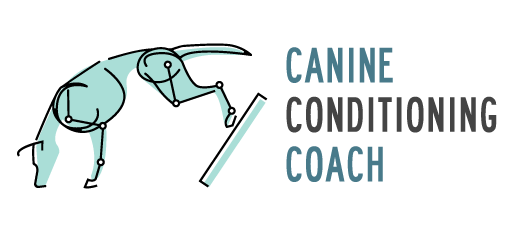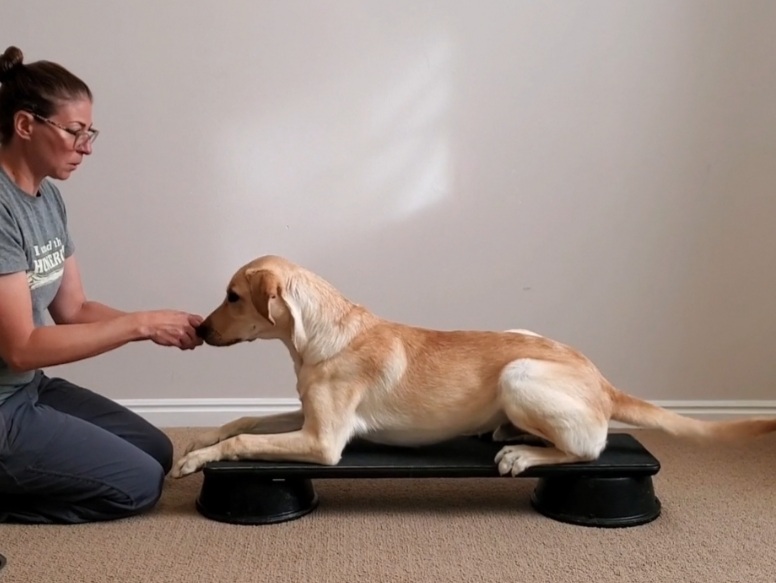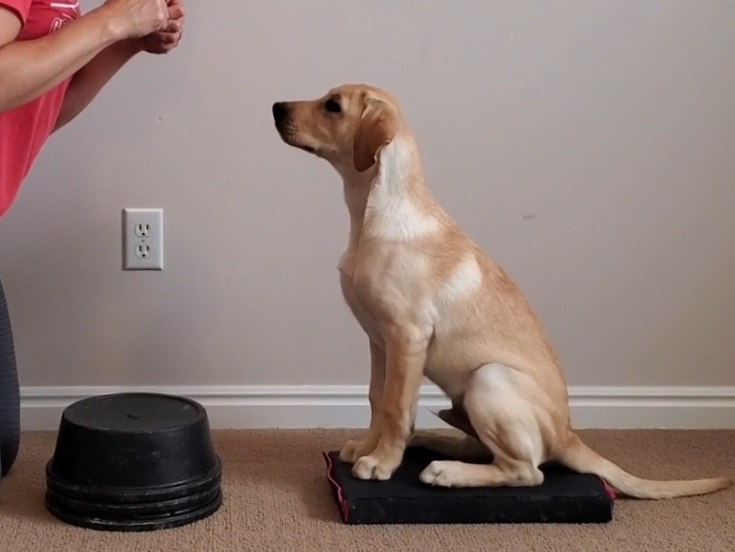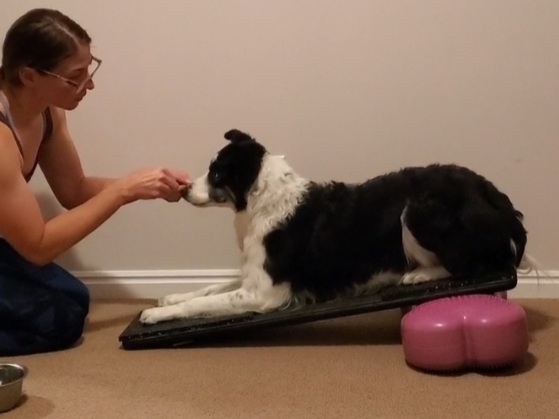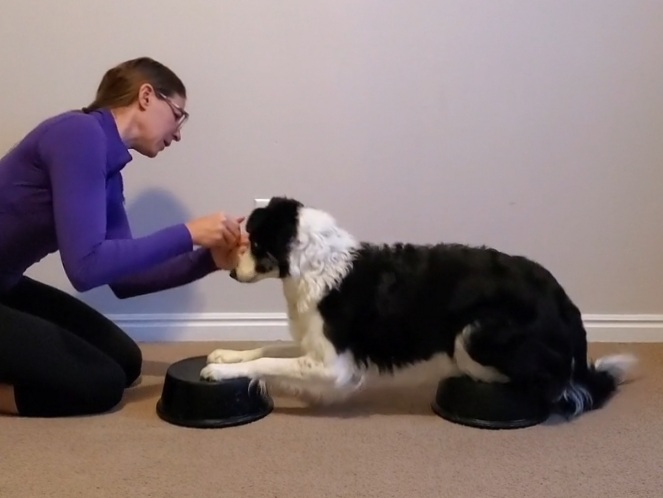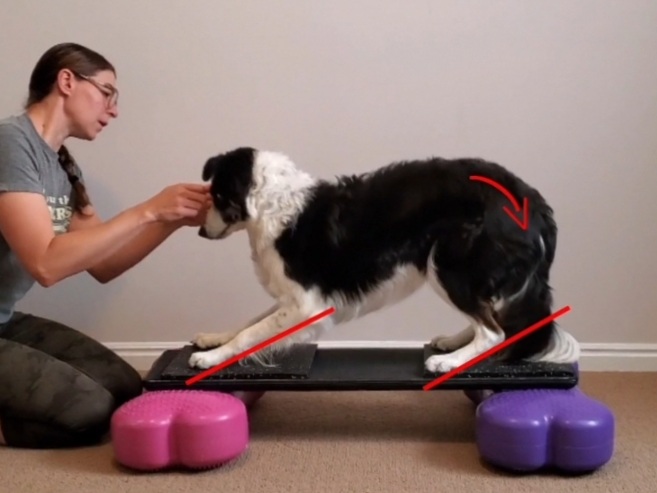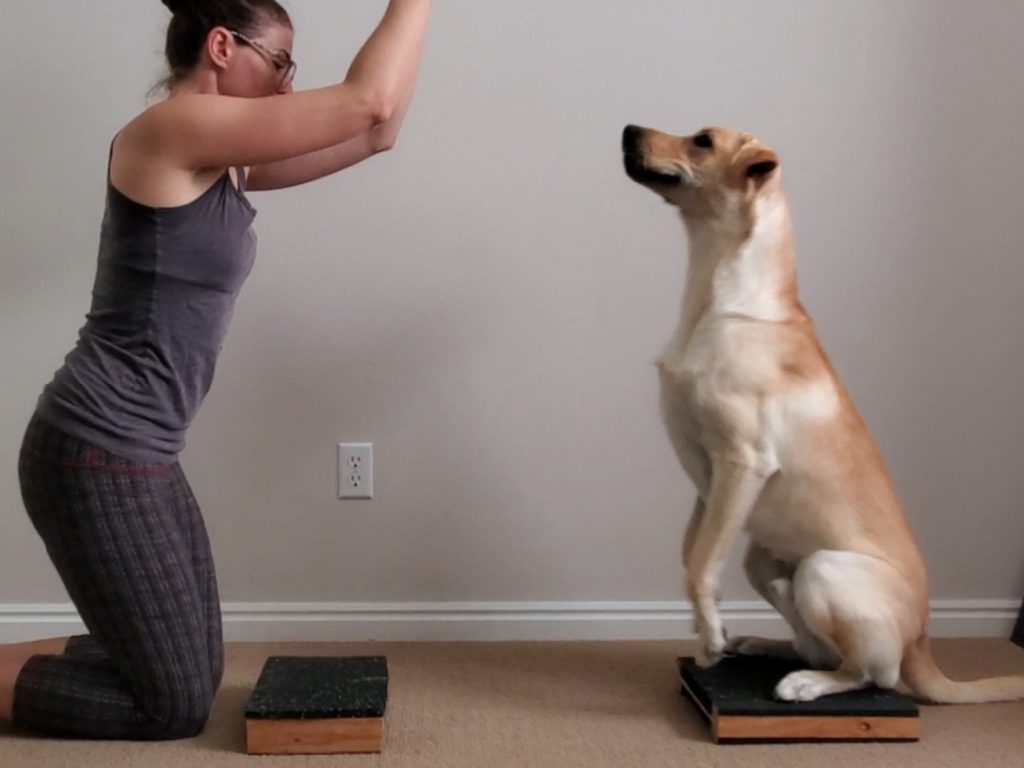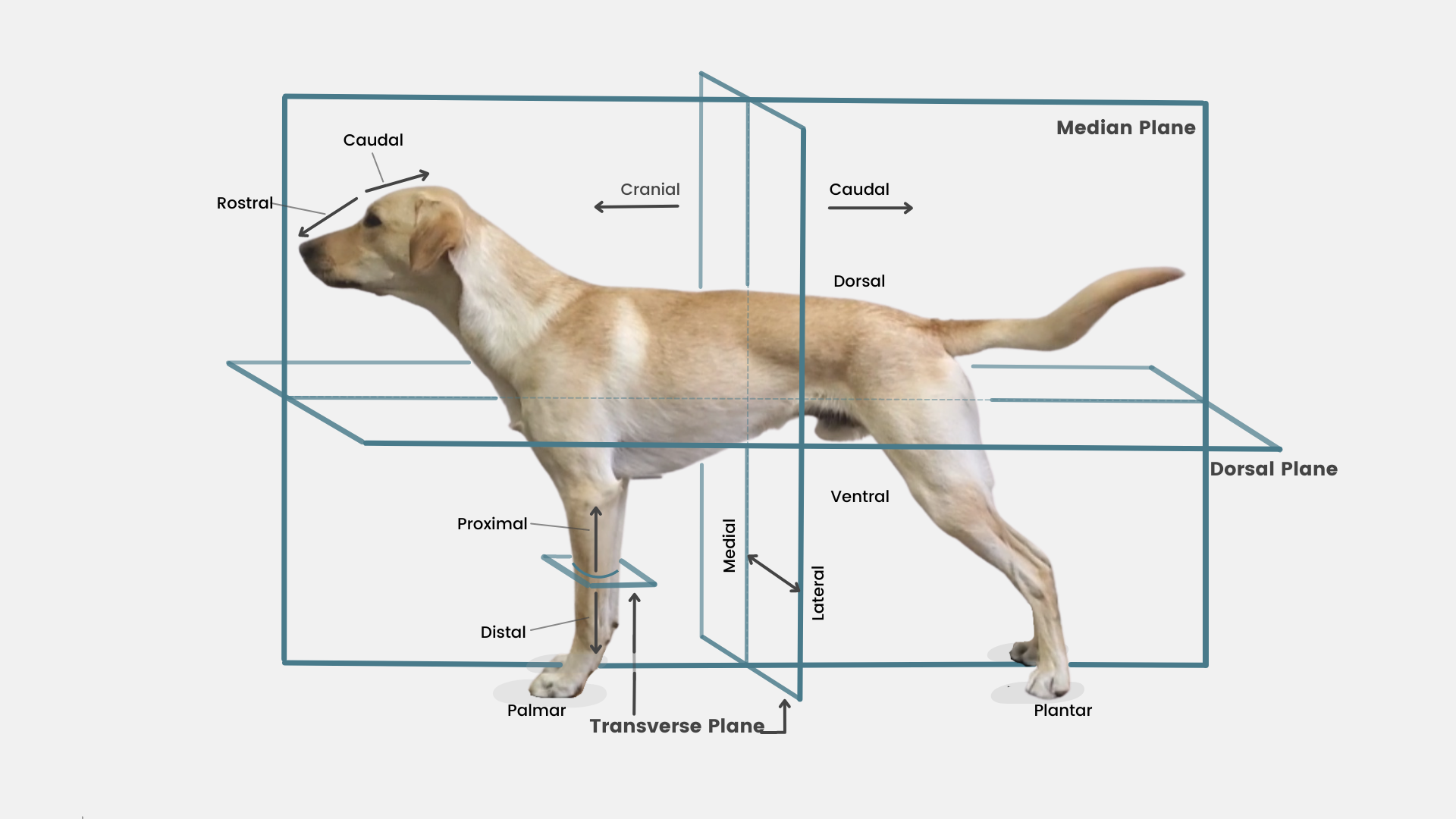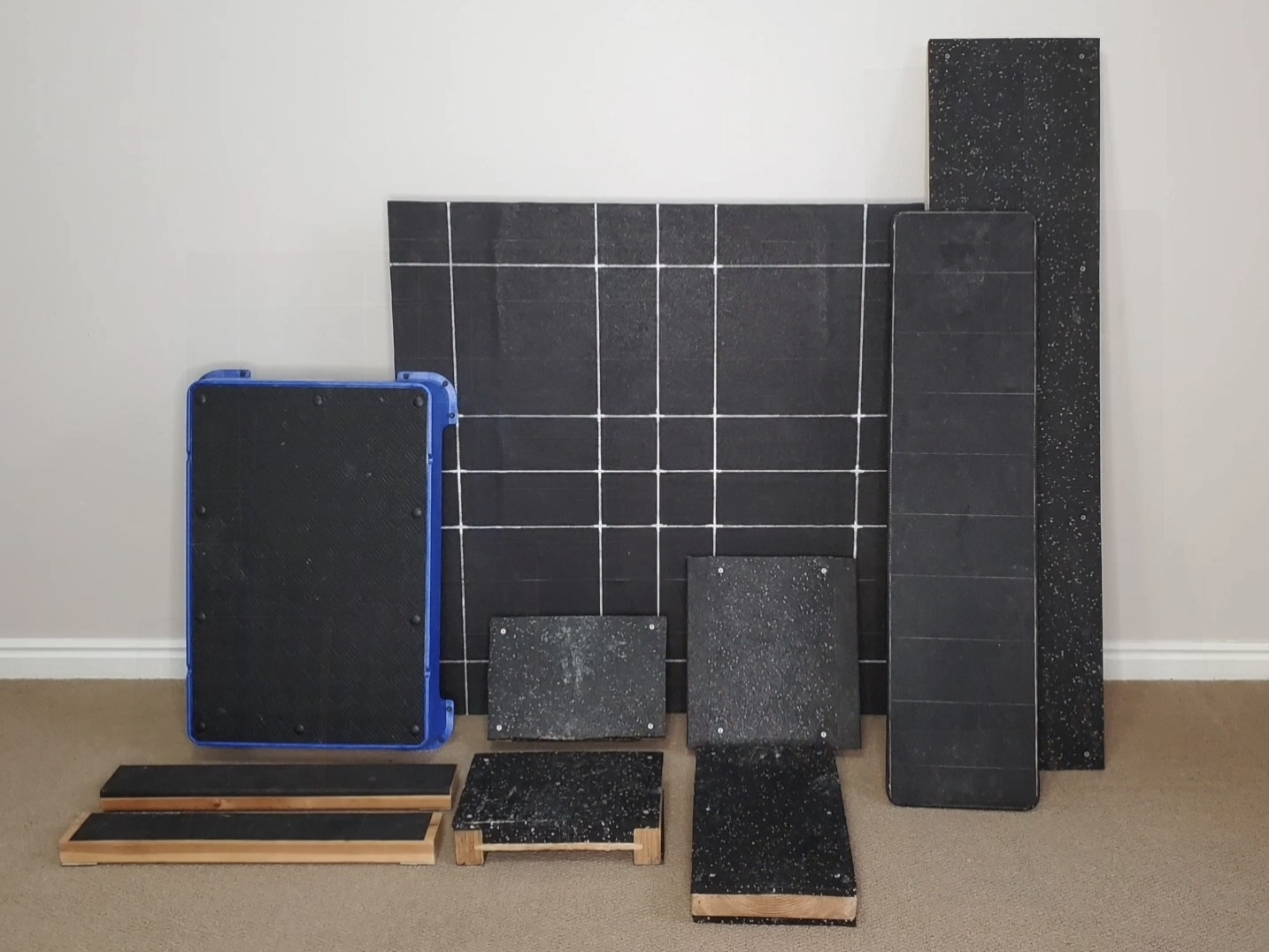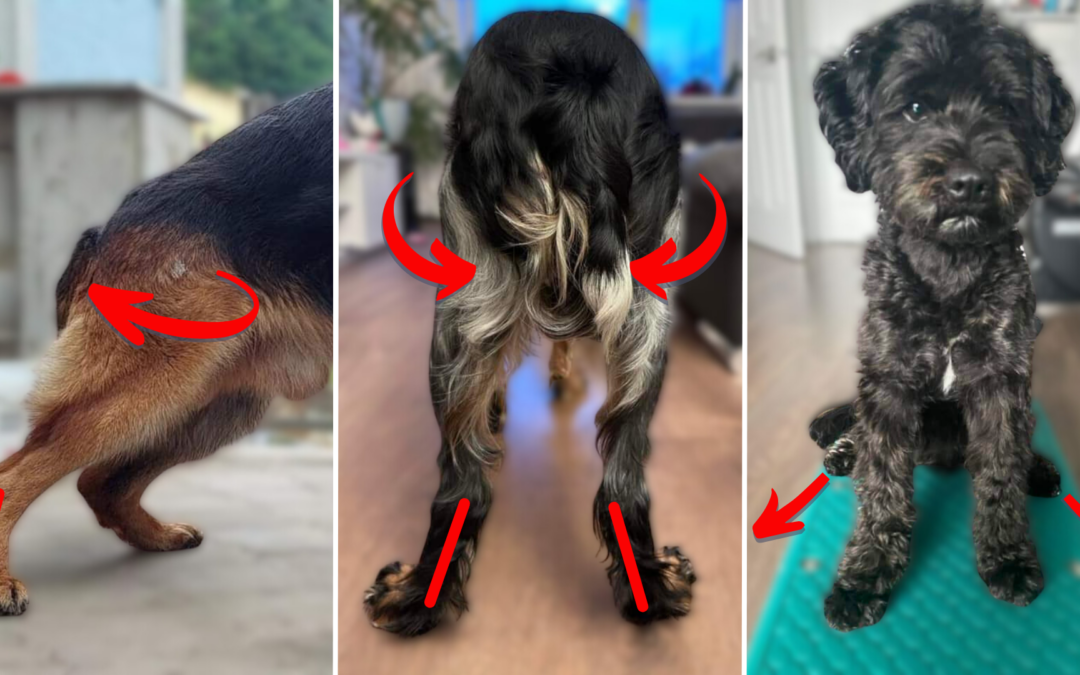Purpose: This tutorial demonstrates the beginning level of teaching a formal Fold Back Down. The ultimate goal is to have the thoracic limbs and pelvic limbs synchronized, and moving simultaneously at the same angle throughout. But, if we only marked/rewarded for perfection we wouldn’t get anywhere… so we have to start with a close approximation. The goal in ALL exercises is 85% correct. 100% perfect isn’t a real thing… especially not in the learning phase.
Equipment: 2 thin foot targets
Targets: A synchronized fold back down can only happen if the scapula (shoulder blade) is allowed to rotate. More often than not, dogs who are unable to keep the rear feet, or front feet still are dealing with some kind of tightness around the scapula.
This synchronized movement also requires a great deal of abdominal strength in order to create a caudal/backward rotation of the pelvis during the fold back. An excellent demonstration of this can be seen in the Fold Back Down-Stand Split Surface: Advanced exercise. This is also a great exercise to teach the dog to stay weight shifted into the rear, and engage the hamstrings.
My criteria for earning a cookie in this video was set ahead of time and included:
- More of a “fold back” than a “bow”/ level-ish top line
- Parallel hocks
- Elbows staying shoulders width of space apart/no rotating outward
- Feet more still than not still
Watchpoints:
- Depending on how a particular pup compensates, the props being used might need to change. For dogs like Ron Burgundy, who have a tendency to move the feet backward, individual front and rear foot targets (as shown in the video) are best. For dogs that have a tendency to compensate with elbows sliding apart, or the rear feet/hocks sliding apart, a better choice of prop would be a slightly raised platform, just wider than the dogs base, and long enough the front feet can stay on the platform and the hocks can be supported in the fold back down demonstrated in this Fold Back Down- Decline/incline: Intermediate video.
- We want to promote a level top line as soon as possible. Of course it’s not going to be perfect right in the beginning, but using the placement of reward/handler motion forward toward the dog (horizontal) vs downward toward the front feet (vertical) will help encourage the “folding back” motion vs the “bow” motion. Over time, elbows and hocks should contact and leave the ground at the same time.
- It’s important to reward before the dog moves their feet. Adjusting the timing of the reward so that it slightly early can help during the stand phase, and limiting the time the dog is in the fold back down position can help during the down phase. This is detailed in the video.
NOTE: if you are dealing with a growing dog, there will be times during growth spurts where a properly executed fold back down is mechanically impossible. If the length of the femur (upper thigh bone) or humerus (upper arm bone) is proportionally too long, the dog has to move their feet. You’ll notice how much older Ron Burgundy is in this beginner level exercise vs the other beginner level exercises. His crazy growth spurts have kept this exercise on the “back burner until” about 10 months old.
